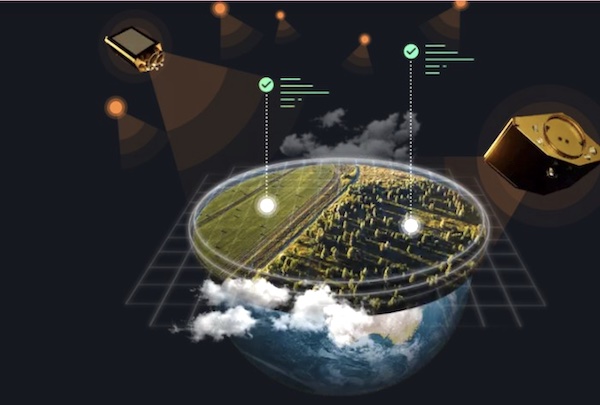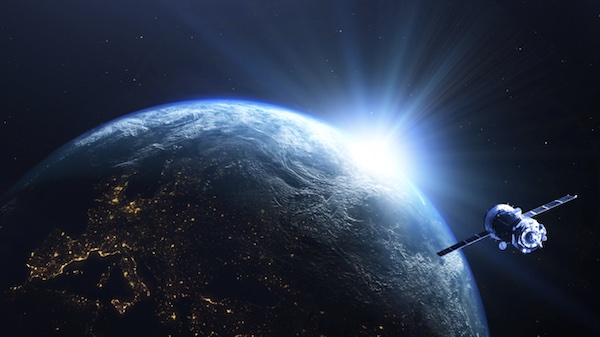

World Space Week takes place every year from 4 to 10 October. This event is designed to give people a broader knowledge of space industry and celebrate its contribution, including satellites system to improve the conditions of people’s lives. In this way, people can identify the potential benefits of the space industry and how the current opportunities can be applied for sustainable development in the economy. In addition, during World Space Week, society can show their support to different space projects.
Space and Sustainability
In 2022 the participants of World Space Week will discuss building sustainability from space. They will talk about space opportunities’ application to increase sustainability on Earth, particularly the orbital region surrounding the Earth.
Through space research and remote observation, it is possible to assess climate change, support and develop sustainable agriculture in developing countries, and detect various pollution of water sources and on land. World Space Week includes several outreach events from various organizations around the world.
Constellation of Satellites to Focus on Agriculture by EOS Data Analytics
EOS Data Analytics is a global provider of artificial intelligence-based satellite image analytics. The company cooperates with various industries, including agriculture and forestry which are its priorities. EOSDA plans to launch a satellite constellation, EOS SAT, to be able to collect, process, analyze and deliver data for agriculture, creating a complete production vertical. This project is being developed to provide the farming land monitoring.
The seven optical satellites launched in low Earth orbit will improve the accuracy and availability of EOSDA monitoring data. The future grouping will also contribute to solving such global problems of humanity as soil degradation, environmental threats, and climate change—furthermore, reliable data analytics for agriculture help to support industry sustainability and food security.
The EOS SAT satellites will have a unique set of band channels to serve agriculture’s needs better. The re-visit of the entire globe by satellites with 1.4-meter panchromatic and 2.8-meter multispectral resolution will be carried out within three days.
In 2021, the project was being prepared for testing, and flight and operational readiness were also checked. The launch of the first satellite is scheduled for 2022. Next year, three more launches will be carried out. In 2024-2025, more satellites are planned to be launched into space.
Use of Satellite Data by Farmers and Agricultural Concerns
Launching a satellite constellation focused on agriculture is a large-scale project that will help large agricultural enterprises monitor fields remotely and optimize resource use. The main goals of EOSDA are to connect with local integrators who will help farmers to implement technologies and resource providers interested in developing integrated approaches to agriculture. The company’s solutions and satellites in space will also bring even more value to farmers by giving them access to reliable analytics and tracking of farmland problems using various tools, including NDVI, zoning, fertilizer management, and soil moisture analysis.
The launch of the EOS CAT grouping is not just a business project—it’s another way to realize the company’s mission to use space for the benefit of humanity. Agriculture must adapt to climate change, and reliable satellite data is one of the keys to achieving this goal. EOSDA aims to expand the use of satellite data and improve tools for their analytics. In the long term, the EOS SAT project will play a massive role in the agricultural industry.
Conclusions
Agriculture faces many challenges related to climate change and many other factors. However, traditional farming methods can also harm the environment. This is where precision farming comes into play, not only to reduce crop losses and adapt to changing weather but also to reduce the negative impact of farming on the environment through the rational allocation of resources. Satellite monitoring enables farmers to detect crop problems on time and track the condition of plants and soil throughout the growing season.
The EOS SAT satellite constellation by EOS Data Analytics will be a unique project that will cover the needs of agriculture in monitoring agricultural land and help bring a sustainable future to the industry. The company will give farmers, input providers, and other agribusiness participants more opportunities and tools to minimize crop losses. Accurate data will help farmers make practical farm and resource management decisions.













![Foothills-Bundle] Foothills-Bundle](https://thelevisalazer.com/wp-content/uploads/2020/05/Foothills-Bundle-422x74.jpg)




